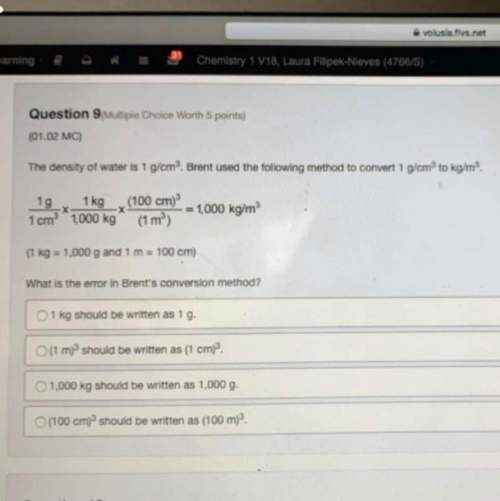
Chemistry, 11.07.2019 14:50 jaasminfloress
N2(g) + o2(g) → 2 no(g) δh = +180.7 kj 2 no(g) + o2(g) → 2 no2(g) δh = −113.1 kj 2 n2o(g) → 2 n2(g) + o2(g) δh = −163.2 kj use hess's law to calculate δh for the reaction. n2(g) + 2 o2(g) → 2 no2(g).

Answers: 1
Another question on Chemistry

Chemistry, 22.06.2019 10:50
Determine the empirical formula for succinic acid that is composed of 40.60% carbon, 5.18% hydrogen, and 54.22% oxygen.
Answers: 1

Chemistry, 22.06.2019 18:10
Given the following at 25c calculate delta hf for hcn (g) at 25c. 2nh3 (g) +3o2 (g) + 2ch4 (g) > 2hcn (g) + 6h2o (g) delta h rxn= -870.8 kj. delta hf=-80.3 kj/mol for nh3 (g), -74.6 kj/mol for ch4, and -241.8 kj/mol for h2o (g)
Answers: 1

Chemistry, 23.06.2019 03:30
Ahelium balloon contains 16.9 l of helium at stp. how many atoms of helium are in the balloon
Answers: 1

Chemistry, 23.06.2019 07:30
Assignment directions: pick one of the following chemists and perform a bit of research on him/her. answer the following questions. alice hamilton rosalind franklin marie curie gertrude b. elion ada yonath henry cavendish robert boyle antoine lavoisier mario j. molina svante arrhenius
Answers: 1
You know the right answer?
N2(g) + o2(g) → 2 no(g) δh = +180.7 kj 2 no(g) + o2(g) → 2 no2(g) δh = −113.1 kj 2 n2o(g) → 2 n2(g)...
Questions



















Health, 31.07.2019 03:10




